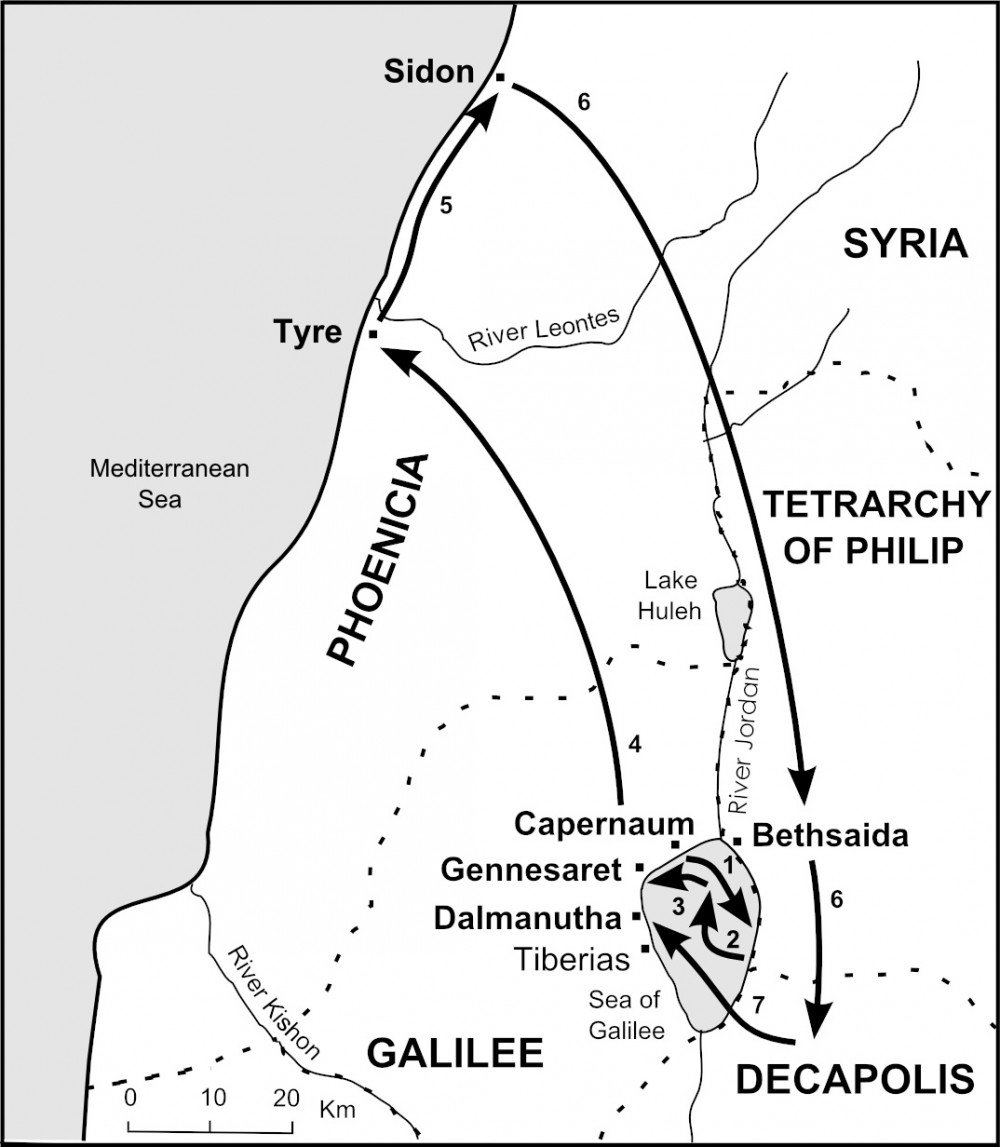Inside Out
Mark 7:14-23
Jewish Food Laws
Most people know that many Jews follow strict food guidelines. We all have heard the word "kosher" but do you really know what that means? From the specific foods they are allowed to eat to how it must be prepared, they adhere strictly to traditions and regulations. Some Jews even have two sinks, one for meat and one for dairy.
The following information is from The Jewish Virtual Library. Below are just a few excerpts. To check out their complete webpage on Jewish Food Laws and Regulations, particularly more details on the preparation and keeping a kosher kitchen, click the button below.
Kashrut
"Kashrut is the body of Jewish law dealing with what foods can and cannot be eaten and how those foods must be prepared. The word 'Kashrut' comes from the Hebrew meaning fit, proper or correct.
The word 'kosher,' which describes food that meets the standards of kashrut, is also often used to describe ritual objects that are made in accordance with Jewish law and are fit for ritual use. Food that is not kosher is referred to as treif (literally torn).
Kosher is not a style of cooking and therefore there is no such thing as 'kosher-style' food. Any kind of food - Chinese, Mexican, Indian, etc. - can be kosher if it is prepared in accordance with Jewish law. At the same time, traditional Jewish foods like knishes, bagels, blintzes and matzah ball soup can all be treif if not prepared in accordance with Jewish law."
Why Do Jews Observe the Laws of Kashrut?
"The short answer to why Jews observe these laws is because the Torah says so. The Torah does not specify a reason for these laws but for an observant Jew there is no need for a reason - Jews show their belief and obedience to God by following the laws even though they do not know the specific reason.
In the book To Be a Jew, Rabbi Hayim Halevy Donin suggests that kashrut laws are designed as a call to holiness. The ability to distinguish between right and wrong, good and evil, pure and defiled, the sacred and the profane, is very important in Judaism. Imposing rules on what you can and cannot eat ingrains that kind of self control. In addition, it elevates the simple act of eating into a religious ritual. The Jewish dinner table is often compared to the Temple altar in rabbinic literature."
The Fundamental Rules of Kashrut
"Although the details of kashrut are extensive, the laws all derive from a few fairly simple, straightforward rules:
- Certain animals may not be eaten at all. This restriction includes the flesh, organs, eggs and milk of the forbidden animals.
- Of the animals that may be eaten, the birds and mammals must be killed in accordance with Jewish law.
- All blood must be drained from the meat or broiled out of it before it is eaten.
- Certain parts of permitted animals may not be eaten.
- Meat (the flesh of birds and mammals) cannot be eaten with dairy. Fish, eggs, fruits, vegetables and grains can be eaten with either meat or dairy. (According to some views, fish may not be eaten with meat).
- Utensils that have come into contact with meat may not be used with dairy, and vice versa. Utensils that have come into contact with non-kosher food may not be used with kosher food. This applies only where the contact occurred while the food was hot.
- Grape products made by non-Jews may not be eaten."
I'm Hungry...
MARK 8:1-21
Jesus Among the Gentiles
In the map above you can track Jesus' ministry as he begins to journey out into Gentile regions. The feeding of the 4,000 likely took place on the eastern shore of the Sea of Galilee in the Decapolis. The disciples and Jesus then get back in the boat and cross the lake to Dalmanutha (Magdala). The pictures below are of the ruins of the first century town of Magdala and include the marketplace, a Mikvaot (ritual bath) and synagogue. It is believed that the remains of a few mansions have been found indicating that Magdala was home to some wealthy individuals. The marketplace is notable in that it not only contains plastered pools for displaying fresh fish, but an advanced plumbing system connecting the shops with fresh ground water was discovered. Additionally, four ritual baths have been discovered here, which are the earliest dated baths found in the country that use subterraneous flowing water. They still function today!
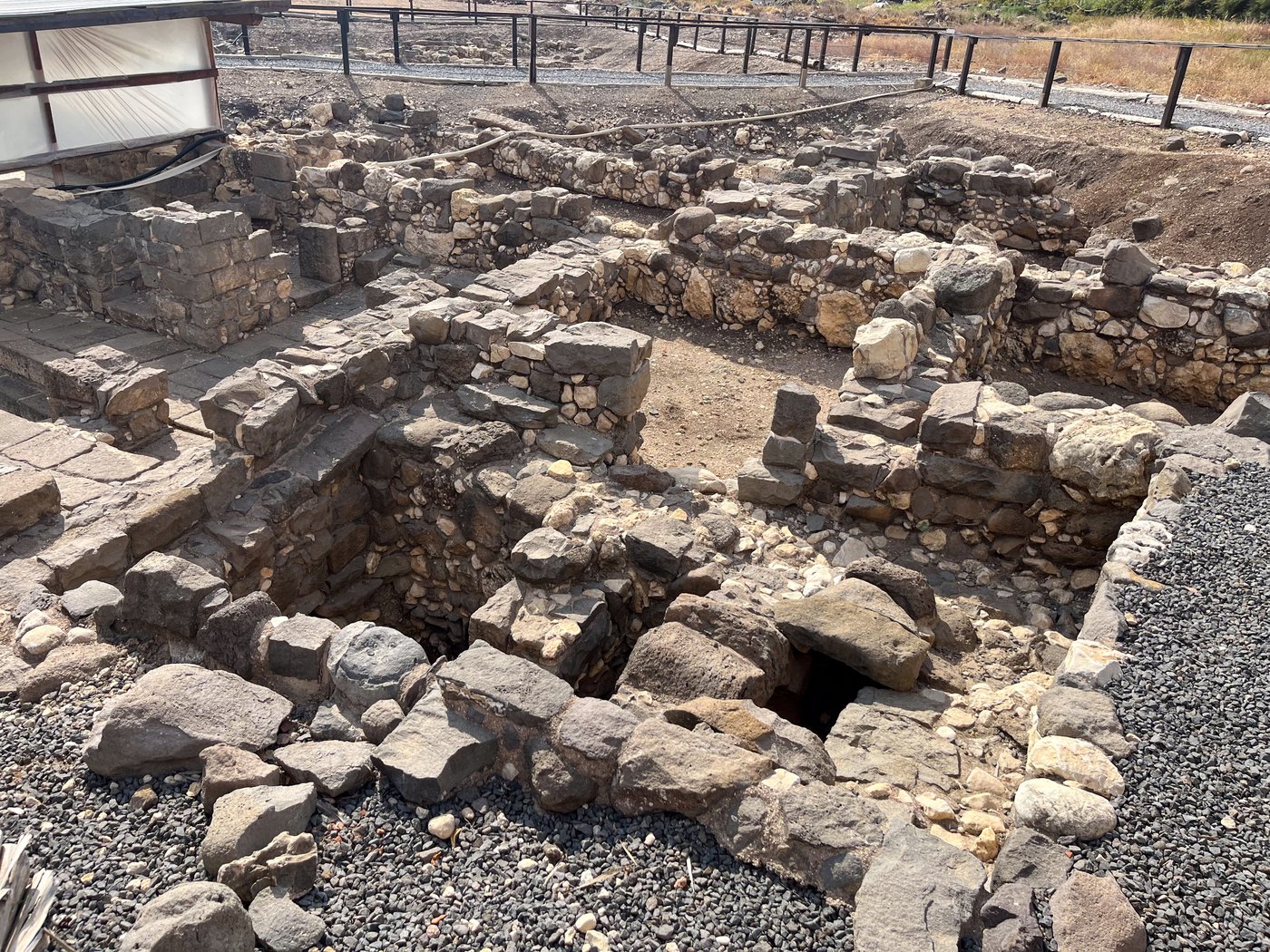 Ruins in Magdala
Ruins in Magdala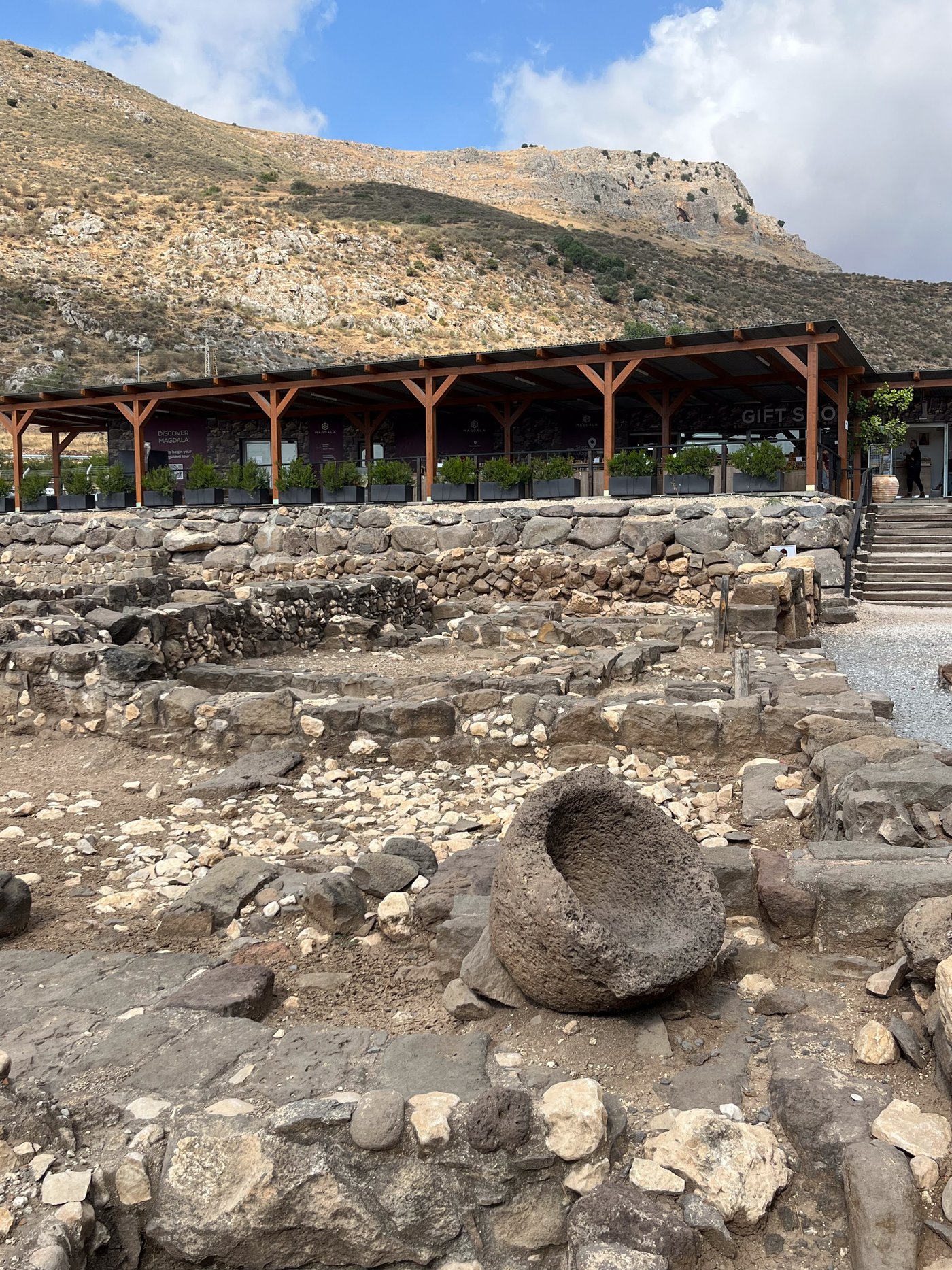 Ruins in Magdala
Ruins in Magdala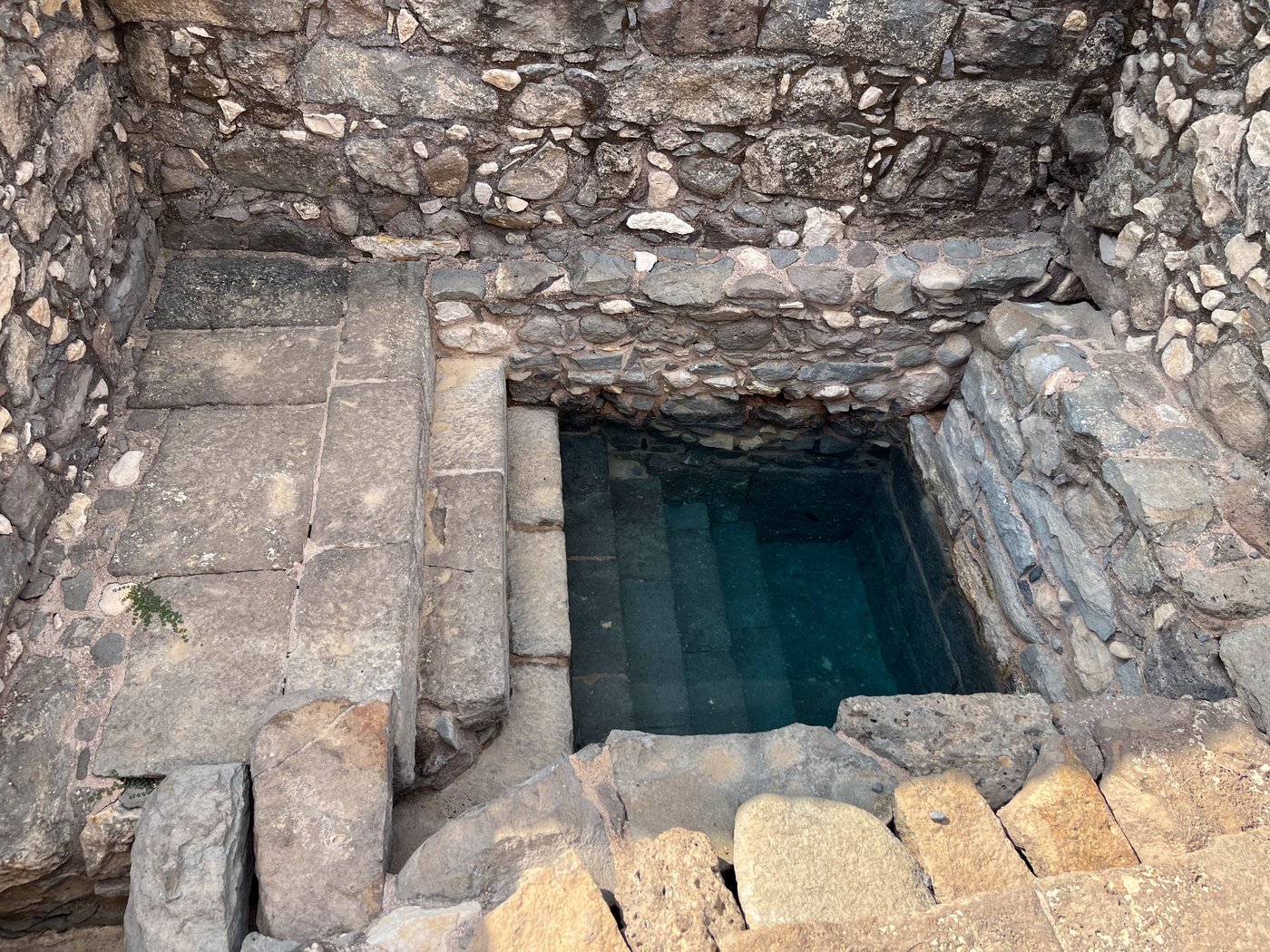 Mikvaot in Magdala
Mikvaot in Magdala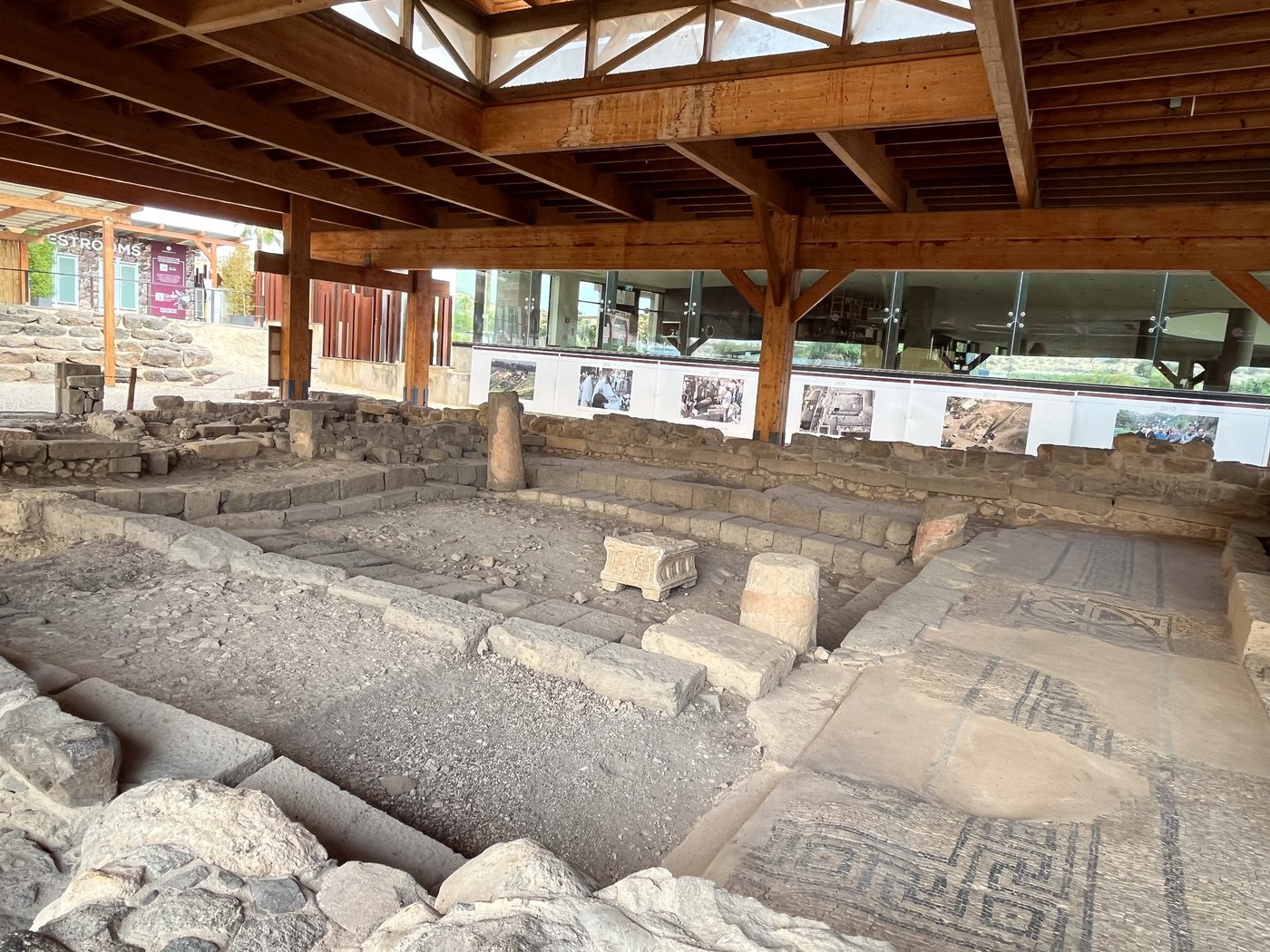 First Century Synagogue in Magdala
First Century Synagogue in Magdala

